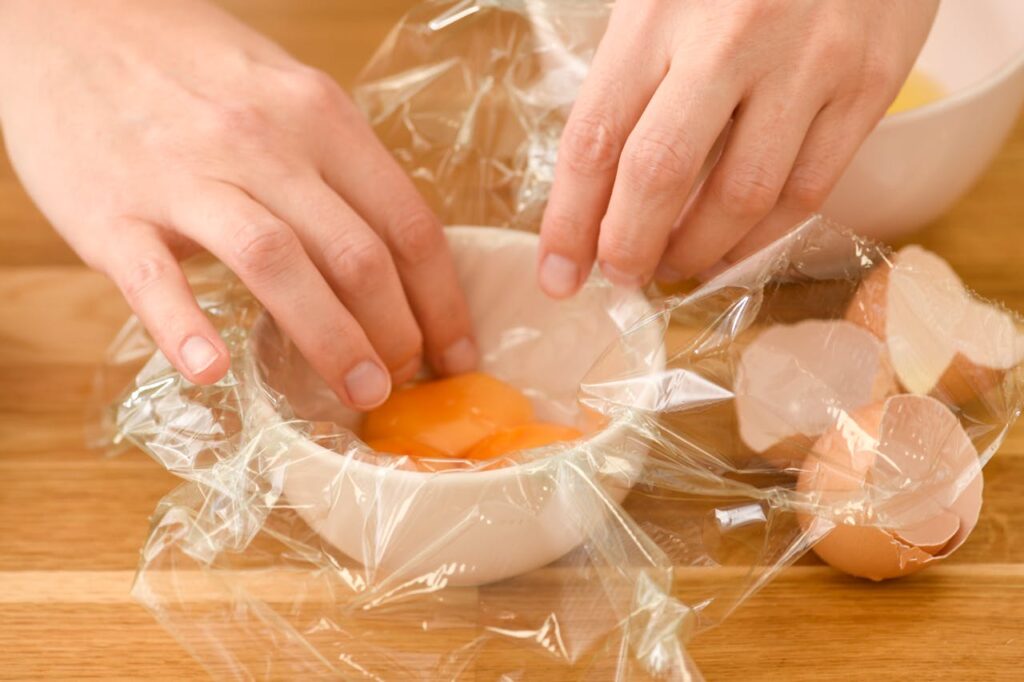
Body + Mind is reader-supported. We may earn an affiliate commission when you buy through some of the links on our site.
Even though my favorite foods might hit the spot, I make a point of knowing how they can give me foodborne illnesses. If you know how to reset your gut when you eat contaminated food, you’ll feel confident that you can stay healthy. You deserve the relief I felt after I learned how to improve my gut’s health while recovering from a round of food poisoning with a bagged salad.

Gut resilience means that your digestive system has a strong microbiome. I’m happy to report that it has nothing to do with doing sit-ups. Your microbiome helps your body resist or recover from imbalances caused by viruses, bacteria and anything else that causes unpleasant trips to the bathroom. Rebuilding it after an illness is how to return to your regularly scheduled bowel movements.
When I was a kid, I imagined that people got food poisoning because they accidentally drank spoiled milk or rotten vegetables. Those things are gross, but tainted food often develops in ways consumers can’t see. Dole Fresh Vegetables issued a February 2024 recall because several of its salad kits possibly contained Listeria monocytogenes after interacting with a contaminated cheese line in another brand’s manufacturing line.
You’ll never see that manufacturing facility or the microscopic Listeria monocytogenes wiggling around in your cheese. You also can’t tell if your eggs have germs in the yolks or if your fruit absorbed unclean water during irrigation. I don’t say those things to make you swear off fresh foods. Knowing how unsafe groceries arrive in your home is essential to protect your health.
You don’t have to panic if you start feeling queasy after eating. Watch for some common upset stomach symptoms that are easy to miss. I knew I’d eaten something bad when I had:
Those side effects are similar to the seasonal flu, so I know how frustrating it is to wonder which one you have. If your symptoms start a few hours after eating, it’s likely food poisoning. The flu takes 12 to 24 hours to make people sick. Think about the last time you felt off and slowly developed nausea or a fever over the course of a day. Food poisoning doesn’t take that long because your stomach wants to eject the contamination immediately.

Learning how to reset your gut after food poisoning could help you recover faster. I always start feeling better once I give my digestive system the dietary tools it needs to heal.
Throwing up or having diarrhea for hours will drain your digestive system of any extra liquid it might have had. Chugging water is the last thing I want to do when I’m sick, but I still prioritize sipping it throughout the day when I can. The body needs water for basic functions, including maintaining a stable digestive system.
Ask a loved one to pick up some electrolyte-infused beverages at the grocery store when your stomach settles enough to rehydrate. Drinking water with electrolytes will help your small intestine absorb fluids better by activating sodium-glucose transporters.
Imagine someone trying to repair their house without a toolbox. They wouldn’t accomplish anything if they didn’t have all the needed materials. Probiotics are a toolbox for your gut. The helpful bacteria let your body break food into digestible nutrients, but food poisoning symptoms evacuate them from your stomach like everything else.
You’ll need to eat probiotic foods or take a supplement as you recover from eating contaminated food. The beneficial bacteria ease your stomach back into a digestive routine. They can also fortify your stomach lining, which may remain inflamed after hours of diarrhea and vomiting.

I’ve heard people recommend eating high-fiber foods to improve their digestive tract. While that might be true while you’re healthy, the nutrient-dense ingredients are often too intense for stomachs recovering from food poisoning. Remember, you’re still rebuilding your microbiome in the hours and days after your symptoms subside.
Try to stick with easily digestible items as you recover and introduce fibrous foods like applesauce. Understanding why your digestive system will need time to handle fiber-dense foods like broccoli is easier once you learn how to rebuild your gut health after food poisoning.
I couldn’t run a marathon and immediately win a boxing match. The race would exhaust me, leaving my muscles too weak to compete in the ring. I’d need to rest before that could happen. Foodborne illnesses are a similar workout for your stomach muscles.
Your digestive system will be too exhausted from a round of food poisoning symptoms to return to full strength immediately. Try to sleep as much as possible once your vomiting or diarrhea subsides. Rest also gives your immune system time to fight an infection if you’re sick because a virus sneaked into your last meal.
Food poisoning can seem world-ending, but your stomach will eventually quiet down. If you know how to rebuild your gut health after food poisoning, you’ll return to your routine faster. Knowing that I can nurture myself back to full strength brings me peace of mind, making foodborne illnesses seem less scary.
Your email address will only be used to send you our newsletter, and at any time you may unsubscribe. For more information, see our Privacy Policy.